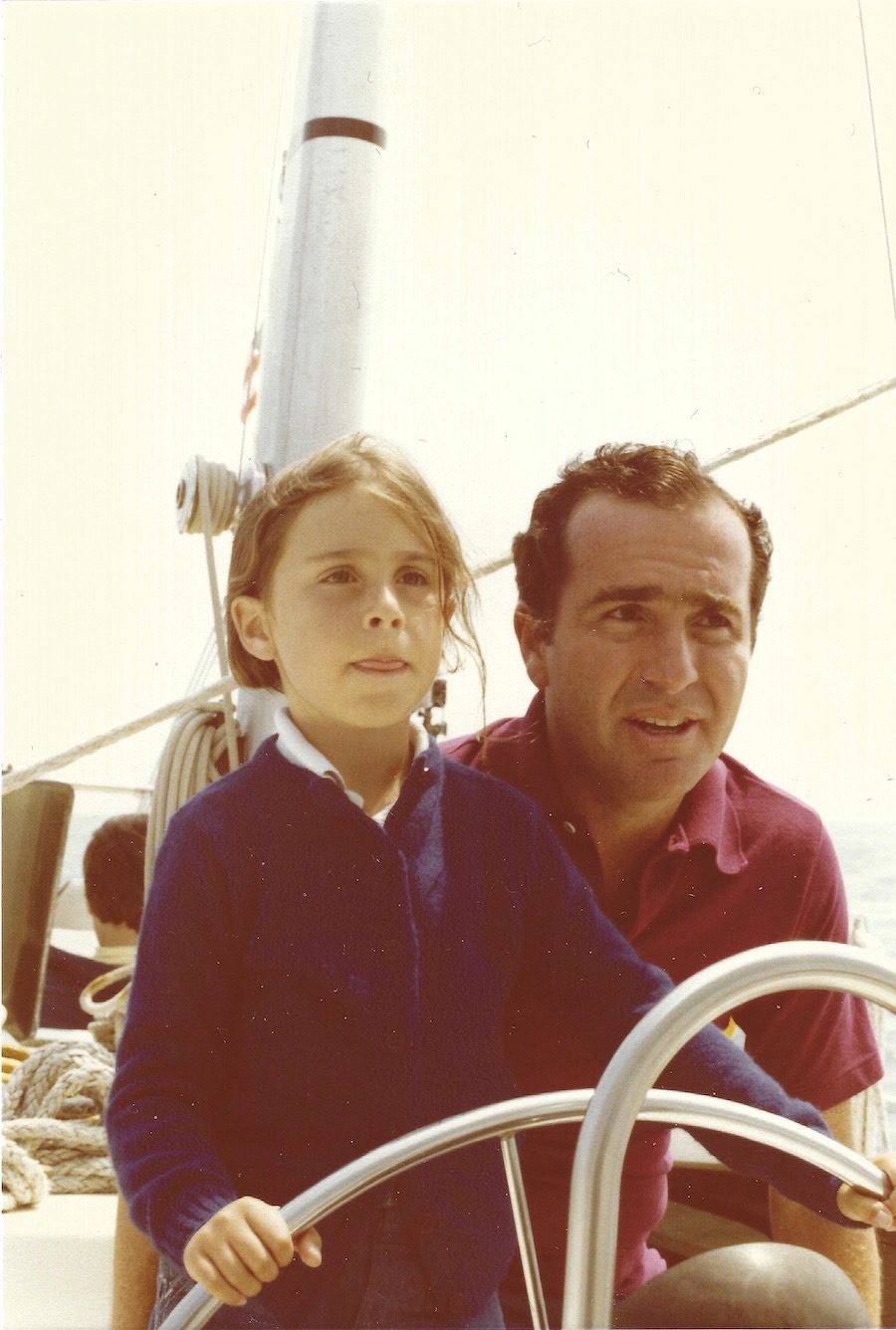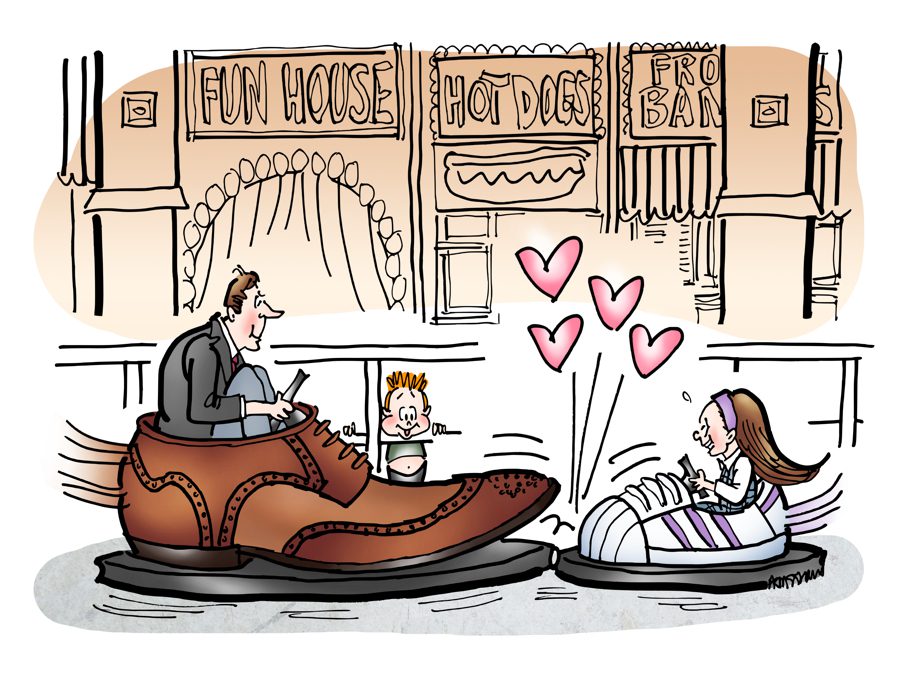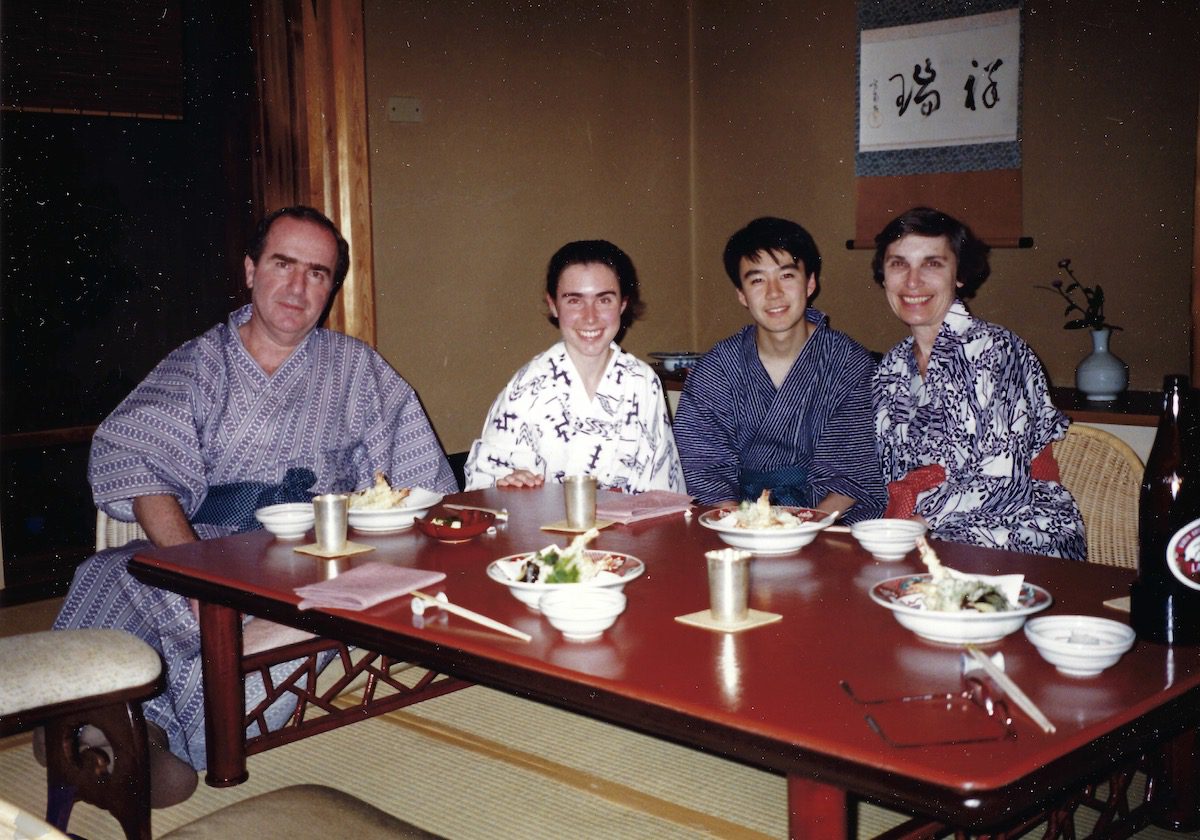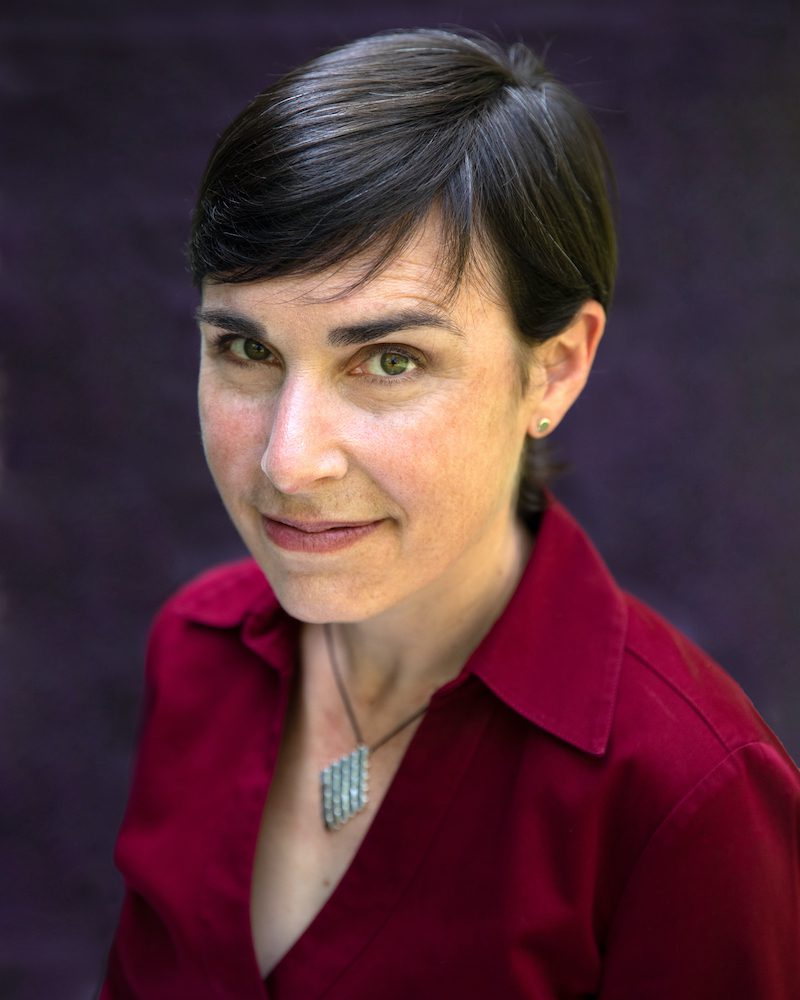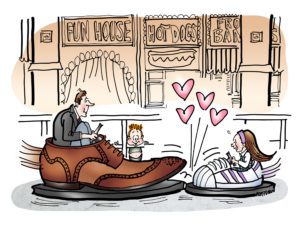
I grew up the beloved only child of a father who—having moved on up from Sheepshead Bay to the Upper East Side—cared deeply about good clothes. His shelves held stacks of Turnbull & Asser shirts crisply folded around cardboard from the cleaners; his trousers—Paul Stuart pinstripes for work, cuffed chinos for weekends—had creases sharp enough to cut. His jackets, gray flannel and Harris tweed, hung in a double row on curved wooden hangers. He did not wear jeans or t-shirts. The rhythmic whisshoo, whisshoo of the horsehair brush he used to shine his wingtips was part of every morning. At night when he came home, my job was to insert the cedar shoe-trees and align his shoes on the rack next to their flawless fellows. He would hand me his cufflinks—silver ovals—and I would put them carefully in their red leather box. There was a different box for his white plastic collar stays. He had three closets to my mother’s one. He gave her antique brooches and Hermès scarves for birthdays and anniversaries.
He had equally strong ideas about how a little girl should look. There were always penny loafers, slippery on carpet until you scuffed up the soles; there were always trench coats, which no one else my age seemed to have. He liked my hair long and flinched whenever I went for a trim. He inspected my fingernails and gave me my first tube of acne cream. It was a more formal era, sure, but the appropriate level of dress for each level of occasion was not negotiable. I had a vague sense that other fathers didn’t recoil at the idea of a child wearing denim to dinner at grandma’s, but I didn’t test the theory.
The only time I remember my father directing real anger at me was in sixth grade, when I came home with a pair of flats from Payless that I had proudly and nervously chosen myself. They were beige, with decorative stitching over the vamp. As an expression of tween rebellion they were laughable, but to me they were a statement, perhaps the first time I had chosen something that hadn’t been suggested for me. I remember bringing them, still in the box, to show him after dinner. I saw them suddenly through his eyes—the fake leather, the cardboard insoles—and I could read his thoughts as if they had appeared in a bubble over his head. How could his own daughter have chosen something so tacky? To wear such shoes in public would be to announce my own lack of sophistication. And by extension, his.
He threw them out. There was a right way and a wrong way to do things, and those shoes were wrong. I didn’t argue. Part of me figured he must be right.
I wore a uniform to my all-girls school until I was fourteen, and emerged into the mid-’80s wondering if I’d missed a secret style seminar that everyone else had aced. I wasn’t a Madonna-wannabe, with fishnets and a stack of black rubber bracelets, and I wasn’t poring over The Preppy Handbook and flipping up the collars on my Izods. I had no idea what to do with a blow dryer. My makeup collection consisted of the lip gloss my mother gave me to celebrate getting my braces off. My wardrobe was full of small, clueless lunges toward cool: striped jeans with ankle zippers, wool sweaters from L.L. Bean, boho flannel skirts from Putumayo. My friends occasionally took pity on me; in high school, I ventured down to Canal Jean Co. and bought a vintage men’s overcoat in musty gray herringbone. In college, a ska-loving rude-boy helped me choose a pair of dark green Doc Marten brogues. I wasn’t brave enough for cherry red.
I found my soulmate—someone as indifferent to fashion statements as I yearned to be—freshman year, married him two years after graduation, and moved to his native Tokyo. Suddenly, clothes were beside the point. In Japan I was squarely other, and exotic despite my squareness; people’s judgements stopped at my face and never reached my clothes. I had a new last name and I was learning to express myself in a new language. I was seven thousand miles from home. I cut off my hair. I missed my parents with a constant ache, but I was proud of my growing comfort in a world they’d never even visited. We all got our first email accounts when I left, and I poured every detail into endless messages, a journal of my journey into marriage on the other side of the world. My father’s replies were short but wry. “Because you’re far away I’M PRESSING HARD,” he wrote. He hated computers, had never learned to type. His emails were some of the most explicit affection I’d ever received from him.
When my parents came to visit us, we took them to stay at a traditional ryokan in Kyoto. The inn provided its guests with indigo-patterned yukata—the light cotton kimono worn after bathing—and served an exquisite multi-course dinner. My father was a picture of conflicted misery. He loved Japanese food, loved that his child had launched herself on such an adventurous trajectory, loved his new son-in-law dearly. But he hated sitting awkwardly cross-legged on tatami, hated the costume drama of the four of us wrapped in matching robes with flapping slippers, hated that he was helpless without a word of Japanese. All of the markers he used to establish his place in the world were missing.
Back in New York after our Tokyo sojourn, I spent my thirties raising two children and freelancing from my bedroom, with no imperative or energy for personal presentation. My father’s directives were less direct now: changing diapers and writing book reviews were outside his frame of reference, though he was thrilled with the babies and the by-lines. And then, in the middle of that blurry decade, he was diagnosed with late-stage melanoma.
He told almost no one—he was a successful businessman, not a cancer patient—so almost no one saw him in his final weeks, hunched and unshaven and frail, raging at his body’s betrayal. He wouldn’t let me do much for him—too hard to accept his little girl as a caregiver, though I do remember cutting his toenails for him one quiet afternoon. His feet were too swollen for shoes. He was sixty-six when he died.
When I was forty I found an agent and sold my first book. I cut my hair shorter. I felt most myself in jeans and a t-shirt, with shell-toe sneakers. I considered my wedding ring, a chased gold band from a fancy British jeweler. I loved what it stood for, but it looked like something my father would have chosen. I put it carefully away and commissioned a new one in twining vines of silver, burnished and hand-wrought, made by an old friend.
In January I will turn fifty, and three days later I will publish my second book. It’s about two sisters who set out to prove that women could succeed in spheres beyond the one defined for them by men. Elizabeth and Emily Blackwell, first and third women doctors in the United States, were brilliant and complicated and opinionated; they wore unfussy black dresses, dispensed with feminine frills, and got on with the work at hand. Their father died, broke, before they were out of their teens. Neither of them married, both of them adopted daughters, and Emily lived with a female partner for the last several decades of her life. “I have often thought,” she wrote, “that if I followed solely my inclinations I should assume a man’s dress and wander freely over the world.”
Maybe the Blackwells are rubbing off on me, or maybe I’m finally floating free of the definitions of propriety and femininity laid out for me so long ago. I may have put on a nice blouse for my author photo—I’m enough my father’s daughter for that—but I found it at Goodwill, which would have made him blanch. Outside the frame, I’m wearing jeans and shell-toes.
My father put on clothing like heraldic armor, to proclaim his place in the world and protect himself from the humiliation of being underestimated. He came a long way from where he started, and left Brooklyn so firmly in the past that he never took me to see the house where he grew up on Avenue R. He gave me a childhood that was nothing like his own, in a world I have no desire to escape. I live contentedly where I began, and despite my motley wardrobe I enjoy a kind of confidence he never felt—one that has nothing to do with tailoring. Being underestimated, I have come to understand, can provide protective camouflage.
Without him, I have the space to make my own choices, though I wish he were here to see who I’ve become. I would buy him a pair of shell-toes, which he would never wear. But I bet he’d keep them, pristine and unscuffed, on the rack next to the wingtips.
***
Rumpus original artwork by Mark Armstrong. Photographs provided courtesy of author. Author photograph of Janice P. Nimura by Lucy Schaeffer.
***
Janice P. Nimura’s newest book, The Doctors Blackwell: How Two Pioneering Sisters Brought Medicine to Women and Women to Medicine, is our December Book Club selection! To receive your early copy and participate in an exclusive chat with Janice about the book, subscribe to The Rumpus Book Club by November 15.

